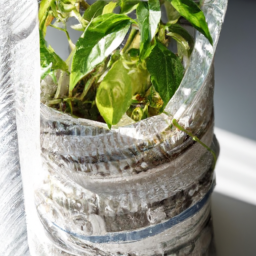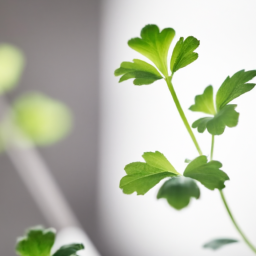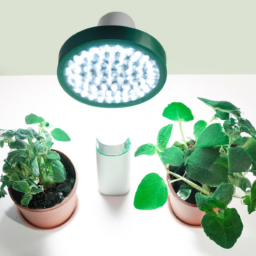
Are you looking for the best grow light for plants to help your indoor garden thrive? With so many options on the market, it can be overwhelming to choose the right one for your specific needs. Whether you’re a seasoned gardener or just starting out, finding the perfect grow light is essential for ensuring your plants receive the proper amount of light to flourish. In this blog post, we will explore some of the top grow lights available and provide tips on how to select the best one for your plants. Let’s shed some light on this important topic and help you make an informed decision for your indoor garden.
Top Features to Look for in the Best Grow Light for Plants
Introduction
When it comes to growing plants indoors, having the right grow light is essential for ensuring healthy growth and maximum yield. With so many options available on the market, it can be overwhelming to choose the best grow light for your plants. In this guide, we will discuss the top features to look for in the best grow light for plants to help you make an informed decision.
Light Spectrum
The first and most important feature to consider when choosing a grow light for your plants is the light spectrum it provides. Different types of plants require different light spectrums for optimal growth. For example, leafy greens like lettuce and herbs thrive under blue light, while flowering plants like tomatoes and peppers need red light. Look for a grow light that offers a full spectrum of light, including blue, red, and white, to ensure that your plants receive all the light they need for healthy growth.
In addition to the light spectrum, consider the intensity of the light emitted by the grow light. Plants need a certain amount of light intensity to photosynthesize effectively. Look for a grow light with adjustable intensity settings so you can customize the light output to meet the needs of your specific plants.
Another important factor to consider is the consistency of the light distribution. Uneven light distribution can result in uneven growth and lower yields. Look for a grow light with a wide beam angle and uniform light distribution to ensure that all parts of your plants receive the light they need.
Energy Efficiency
Another important feature to consider when choosing a grow light for your plants is energy efficiency. Grow lights can consume a significant amount of electricity, so it’s important to choose a light that is energy-efficient to minimize your energy costs. Look for a grow light with a high efficiency rating, such as LED grow lights, which are known for their energy efficiency and long lifespan.
In addition to energy efficiency, consider the heat output of the grow light. Some grow lights can generate a significant amount of heat, which can be detrimental to your plants if not properly managed. Look for a grow light with built-in heat sinks or cooling fans to help dissipate excess heat and keep your plants at the ideal temperature for growth.
Finally, consider the durability and longevity of the grow light. Investing in a high-quality, durable grow light will save you money in the long run by reducing the need for frequent replacements. Look for a grow light with a solid construction and a long warranty to ensure that you get the most value for your money.
In conclusion, when choosing the best grow light for your plants, consider the light spectrum, energy efficiency, and durability of the light. By selecting a grow light that meets these criteria, you can ensure healthy growth and maximum yield for your indoor plants.
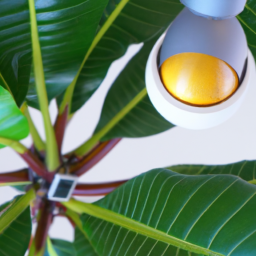
Comparison of the Best Grow Lights for Indoor Plant Growth
Types of Grow Lights
When it comes to choosing the best grow light for your indoor plants, there are several options to consider. The most common types of grow lights used for indoor plant growth are LED, fluorescent, and HID lights. Each type of grow light has its own unique advantages and disadvantages, so it’s important to understand the differences between them before making a decision.
LED grow lights are becoming increasingly popular among indoor gardeners due to their energy efficiency and long lifespan. LED lights produce very little heat, making them ideal for use in small spaces or in close proximity to plants. They also come in a variety of colors, allowing you to customize the light spectrum to suit the specific needs of your plants. However, LED grow lights can be more expensive upfront compared to other types of grow lights.
Fluorescent grow lights are another popular option for indoor plant growth. These lights are affordable, easy to install, and produce a broad spectrum of light that is well-suited for most plants. Fluorescent lights are also energy efficient and produce less heat than HID lights, making them a good choice for small spaces or for use with heat-sensitive plants. However, fluorescent lights are not as powerful as HID lights, so they may not be suitable for plants that require high levels of light intensity.
HID (high-intensity discharge) grow lights are the most powerful type of grow light available, making them ideal for plants that require high levels of light intensity, such as fruiting and flowering plants. HID lights are also more affordable than LED lights and are capable of covering a larger area, making them a good choice for larger indoor gardens. However, HID lights produce a significant amount of heat and can be more difficult to install and maintain compared to LED and fluorescent lights.
Factors to Consider When Choosing a Grow Light
When choosing the best grow light for your indoor plants, there are several factors to consider. The most important factors to consider include the type of plants you are growing, the size of your growing space, your budget, and your level of experience with indoor gardening.
If you are growing a variety of plants with different light requirements, you may want to consider using a combination of different types of grow lights to provide the best possible light spectrum for your plants. For example, you could use LED lights for seedlings and vegetative growth, and switch to HID lights for flowering and fruiting plants.
The size of your growing space will also impact your choice of grow light. If you have a small growing space, you may want to consider using LED or fluorescent lights, which produce less heat and can be placed closer to your plants. If you have a larger growing space, HID lights may be a better option, as they are more powerful and can cover a larger area.
Your budget will also play a role in your choice of grow light. LED lights tend to be more expensive upfront, but they are more energy efficient and have a longer lifespan, which can save you money in the long run. Fluorescent lights are a more affordable option, but they may not be as powerful as HID lights. HID lights are the most affordable option upfront, but they can be more expensive to operate due to their higher energy consumption.
Finally, your level of experience with indoor gardening will also influence your choice of grow light. If you are new to indoor gardening, you may want to start with a more affordable option, such as fluorescent lights, until you gain more experience and confidence in your gardening skills.
Top Picks for Best Grow Lights
After considering the factors mentioned above, here are some top picks for the best grow lights for indoor plant growth:
1. Best Overall: LED Grow Lights – LED grow lights are energy efficient, long-lasting, and customizable, making them an ideal choice for most indoor gardeners.
2. Best Budget Option: Fluorescent Grow Lights – Fluorescent lights are affordable, easy to install, and produce a broad spectrum of light that is well-suited for most plants.
3. Best for High Light Intensity: HID Grow Lights – HID lights are the most powerful type of grow light available, making them ideal for plants that require high levels of light intensity.
In conclusion, choosing the best grow light for your indoor plants is a decision that should be based on the specific needs of your plants, your growing space, your budget, and your level of experience with indoor gardening. By considering these factors and exploring the different types of grow lights available, you can find the perfect grow light to help your indoor plants thrive.
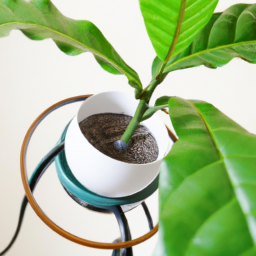
Tips for Choosing the Best Grow Light for Your Specific Plants
Understanding Your Plants’ Needs
1. Consider the Light Intensity
When choosing a grow light for your plants, it’s important to consider the light intensity that your specific plants require. Different plants have different light requirements, so it’s essential to match the grow light to the needs of your plants. For example, high-light plants like tomatoes and peppers will require a grow light with high intensity, while low-light plants like ferns and ivy will do well with a lower intensity light.
One way to determine the light intensity your plants need is to consider their natural habitat. Plants that are native to sunny, bright environments will require more intense light, while plants that are used to shady conditions will do better with lower intensity light.
It’s also important to consider the stage of growth your plants are in. Seedlings and young plants will require more intense light to promote healthy growth, while mature plants may need less intense light to maintain their health.
2. Choose the Right Color Temperature
Another important factor to consider when choosing a grow light is the color temperature. Different color temperatures of light can affect plant growth in different ways. For example, cool white light (5000-6500K) is ideal for promoting vegetative growth, while warm white light (2700-3000K) is better for flowering and fruiting stages.
It’s important to match the color temperature of the grow light to the specific needs of your plants. If you’re growing a variety of plants, you may want to consider using a full-spectrum grow light that provides a balanced mix of cool and warm white light to support all stages of plant growth.
Keep in mind that some plants may have specific color temperature requirements, so it’s important to research the needs of your plants before selecting a grow light.
3. Consider the Light Duration
The duration of light exposure is another important factor to consider when choosing a grow light for your plants. Different plants have different light duration requirements, so it’s essential to match the light duration to the needs of your specific plants.
Most plants require around 12-16 hours of light per day for healthy growth. However, some plants may require more or less light depending on their natural habitat and stage of growth. It’s important to research the light duration requirements of your plants and adjust the light exposure accordingly.
Using a timer with your grow light can help you easily control the light duration and ensure that your plants are getting the right amount of light each day. This can help promote healthy growth and prevent issues like overexposure or underexposure to light.
Choosing the Right Type of Grow Light
1. LED Grow Lights
LED grow lights are a popular choice for indoor plant growing due to their energy efficiency and customizable light spectrum. LED lights can be adjusted to provide the specific light intensity and color temperature that your plants need for optimal growth.
LED grow lights also have a long lifespan and produce less heat than traditional grow lights, making them a safe and cost-effective option for indoor gardening.
When choosing LED grow lights, look for models that offer a full spectrum of light to support all stages of plant growth. You may also want to consider the wattage and coverage area of the LED grow light to ensure that it will meet the needs of your specific plants.
2. Fluorescent Grow Lights
Fluorescent grow lights are another popular choice for indoor plant growing, especially for low-light plants and seedlings. Fluorescent lights are affordable, easy to install, and produce a balanced spectrum of light that is suitable for most plants.
There are two main types of fluorescent grow lights: T5 and T8. T5 lights are more energy-efficient and produce higher light output, making them ideal for high-light plants. T8 lights are less intense but still provide sufficient light for low-light plants.
When choosing fluorescent grow lights, consider the color temperature and intensity of the light to ensure that it matches the needs of your plants. You may also want to consider the size and shape of the fluorescent light fixture to ensure that it will fit your growing space.
3. HID Grow Lights
HID (high-intensity discharge) grow lights are a powerful option for indoor plant growing, especially for high-light plants like tomatoes and peppers. HID lights produce intense light that can promote healthy growth and flowering in plants.
There are two main types of HID grow lights: metal halide (MH) and high-pressure sodium (HPS). MH lights are ideal for promoting vegetative growth, while HPS lights are better for flowering and fruiting stages.
When choosing HID grow lights, consider the wattage and coverage area of the light to ensure that it will meet the needs of your plants. You may also want to consider using a combination of MH and HPS lights to provide a balanced spectrum of light for all stages of plant growth.
I’ll leave you with these final thoughts
If you’re looking to give your indoor plants the best chance to thrive, investing in a high-quality grow light is essential. With so many options on the market, it can be overwhelming to choose the right one for your specific needs. When selecting a grow light, it’s important to consider factors such as the type of plants you’re growing, the size of your space, and your budget.
One of the top contenders for the best grow light for plants is the LED grow light. LED lights are energy-efficient, long-lasting, and provide a full spectrum of light that closely mimics natural sunlight. They are also versatile and can be customized to suit the needs of different plants at various stages of growth. Another popular option is the fluorescent grow light, which is more affordable than LED lights but still provides ample light for plant growth. Whichever grow light you choose, be sure to position it at the correct distance from your plants to ensure they receive the right amount of light for optimal growth.
Here are some FAQs you’d be interested in:
Q1. What factors should I consider when choosing the best grow light for plants?
A1. When choosing the best grow light for your plants, consider factors such as the type of plants you are growing, the size of your grow space, and your budget. Different plants have different light requirements, so it’s important to choose a grow light that will provide the right spectrum and intensity for your specific plants.
Q2. What are the different types of grow lights available for plants?
A2. There are several types of grow lights available for plants, including fluorescent, LED, and HID lights. Fluorescent lights are affordable and energy-efficient, while LED lights are known for their long lifespan and energy efficiency. HID lights are powerful and provide intense light, making them ideal for larger grow spaces.
Q3. How do I determine the right size and wattage of grow light for my plants?
A3. To determine the right size and wattage of grow light for your plants, consider the size of your grow space and the light requirements of your plants. In general, you’ll want to aim for around 30-50 watts per square foot of growing space for most plants. However, this can vary depending on the type of plants you are growing.
Q4. Are there any specific features I should look for in a grow light for plants?
A4. When choosing a grow light for your plants, look for features such as adjustable spectrum settings, built-in timers, and cooling fans to help regulate temperature. These features can help you customize the light output to meet the specific needs of your plants and ensure optimal growth.
Q5. Can I use a regular light bulb as a grow light for my plants?
A5. While regular light bulbs can provide some light for your plants, they are not ideal for promoting healthy growth. Regular light bulbs do not emit the full spectrum of light that plants need for photosynthesis, so it’s best to invest in a dedicated grow light for optimal results.
Dr. Olivia Green is a botanist with over two decades of experience in indoor plant cultivation. She holds a Ph.D. in Plant Biology and has dedicated her career to researching plant behavior in controlled environments. Dr. Green is passionate about helping plant enthusiasts master the art of indoor gardening through her extensive knowledge and practical insights.

